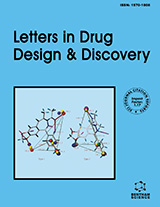Abstract
Rational Drug Design has become a well-established discipline in pharmaceutical research. It uses computational chemistry with the aim to discover or study drugs and their related biologically active molecules. The purpose is to reduce the number of targets for a good drug that have to be subjected to expensive and time-consuming synthesis. The advanced methods developed in this field united with the increased potency of the new computer generation are the tools for the scientist to explore the conformational variability and properties of a large number of potentially active molecules and their interaction with each other or with their biological target (i.e. enzyme or receptor). Among these methodologies, Molecular Dynamics (MD) is one of the most useful tools in this process now routinely used to simulate complex dynamic processes that occur in biological systems such as molecular recognition in drug-receptor complexes. This paper reviews the current status of Molecular Dynamics methods, and some of its most recent and interesting applications in the field of Drug Design and Discovery.
Keywords: Molecular dynamics, drug design, docking, drug-receptor complexes
Current Computer-Aided Drug Design
Title: Molecular Dynamics as a Tool in Rational Drug Design: Current Status and Some Major Applications
Volume: 5 Issue: 4
Author(s): Roberta Galeazzi
Affiliation:
Keywords: Molecular dynamics, drug design, docking, drug-receptor complexes
Abstract: Rational Drug Design has become a well-established discipline in pharmaceutical research. It uses computational chemistry with the aim to discover or study drugs and their related biologically active molecules. The purpose is to reduce the number of targets for a good drug that have to be subjected to expensive and time-consuming synthesis. The advanced methods developed in this field united with the increased potency of the new computer generation are the tools for the scientist to explore the conformational variability and properties of a large number of potentially active molecules and their interaction with each other or with their biological target (i.e. enzyme or receptor). Among these methodologies, Molecular Dynamics (MD) is one of the most useful tools in this process now routinely used to simulate complex dynamic processes that occur in biological systems such as molecular recognition in drug-receptor complexes. This paper reviews the current status of Molecular Dynamics methods, and some of its most recent and interesting applications in the field of Drug Design and Discovery.
Export Options
About this article
Cite this article as:
Galeazzi Roberta, Molecular Dynamics as a Tool in Rational Drug Design: Current Status and Some Major Applications, Current Computer-Aided Drug Design 2009; 5 (4) . https://dx.doi.org/10.2174/157340909789577847
| DOI https://dx.doi.org/10.2174/157340909789577847 |
Print ISSN 1573-4099 |
| Publisher Name Bentham Science Publisher |
Online ISSN 1875-6697 |
 14
14
- Author Guidelines
- Bentham Author Support Services (BASS)
- Graphical Abstracts
- Fabricating and Stating False Information
- Research Misconduct
- Post Publication Discussions and Corrections
- Publishing Ethics and Rectitude
- Increase Visibility of Your Article
- Archiving Policies
- Peer Review Workflow
- Order Your Article Before Print
- Promote Your Article
- Manuscript Transfer Facility
- Editorial Policies
- Allegations from Whistleblowers
Related Articles
-
Synthesis, Characterization of 4-Anilino-6,7-Dimethoxy Quinazoline Derivatives as Potential Anti-Angiogenic Agents
Anti-Cancer Agents in Medicinal Chemistry Transgenic Mouse Models of Tauopathy in Drug Discovery
CNS & Neurological Disorders - Drug Targets Current Understanding of HSP90 as a Novel Therapeutic Target: An Emerging Approach for the Treatment of Cancer
Current Pharmaceutical Design Doxorubicin: The Good, the Bad and the Ugly Effect
Current Medicinal Chemistry Current Strategy for Cisplatin Delivery
Current Cancer Drug Targets Innovative Cancer Treatments that Augment Radiotherapy or Chemotherapy by the Use of Immunotherapy or Gene Therapy
Recent Patents on Anti-Cancer Drug Discovery Protein Domains as Information Processing Units
Current Protein & Peptide Science Herpetic (Non-Cytomegalovirus) Retinal Infections in Patients with the Acquired Immunodeficiency Syndrome
Current HIV Research Cancer Therapy By Targeting Hypoxia-Inducible Factor-1
Current Cancer Drug Targets Conformational Preference of Potassium Salts of N-Acylhydrazinecarbodithioates with Antifungal Activity. Combined Experimental and Theoretical Approach
Current Computer-Aided Drug Design Cytotoxicity and Target Modulation in Pediatric Solid Tumors by the Proteasome Inhibitor Carfilzomib
Current Cancer Drug Targets The Life Cycle of Cutaneous T Cell Lymphoma Reveals Opportunities for Targeted Drug Therapy
Current Cancer Drug Targets Pharmacological Interference With Protein-protein Interactions of Akinase Anchoring Proteins as a Strategy for the Treatment of Disease
Current Drug Targets Enhanced Free Radical Status of Cancer Cells Success and Failure of Prooxidant/Antioxidant Treatment
Current Signal Transduction Therapy Effect of SDF-1 α on Endogenous Mobilized and Transplanted Stem Cells in Regeneration after Myocardial Infarction
Current Pharmaceutical Design Effect of Liposomes with Different Double Arms Polyethyleneglycol on Hepatic Metastasis Model Mice and Evaluation Using a Fluorescent Imaging Device
Current Drug Delivery RNA Splicing Manipulation: Strategies to Modify Gene Expression for a Variety of Therapeutic Outcomes
Current Gene Therapy Current Concepts on the Management of Chordoma
Current Drug Therapy Solvent Modulation of Column Chromatography
Protein & Peptide Letters Current Management of Vascular Tumors in the Neonate
Current Pediatric Reviews


























